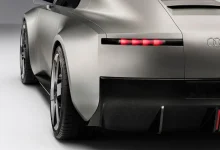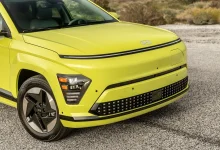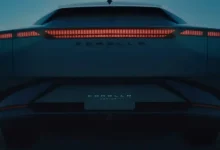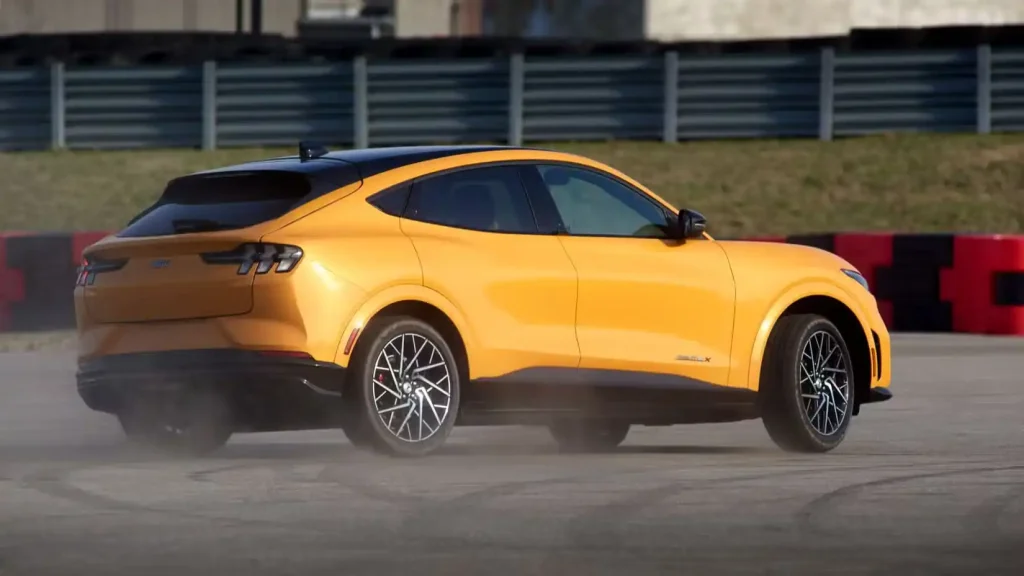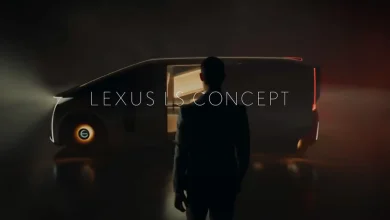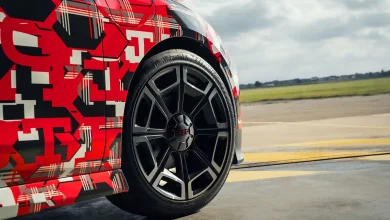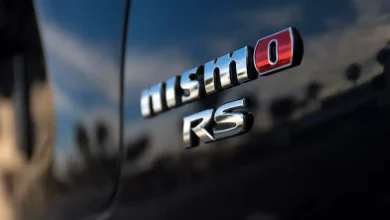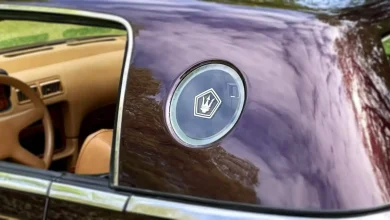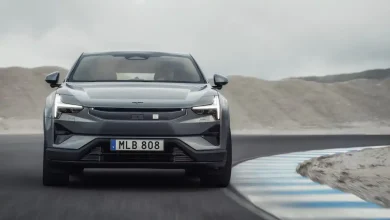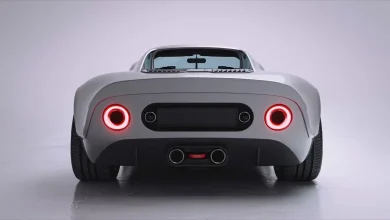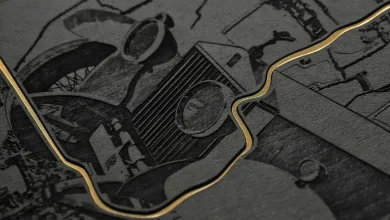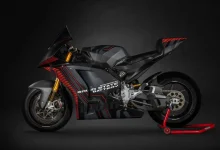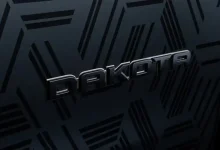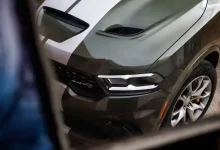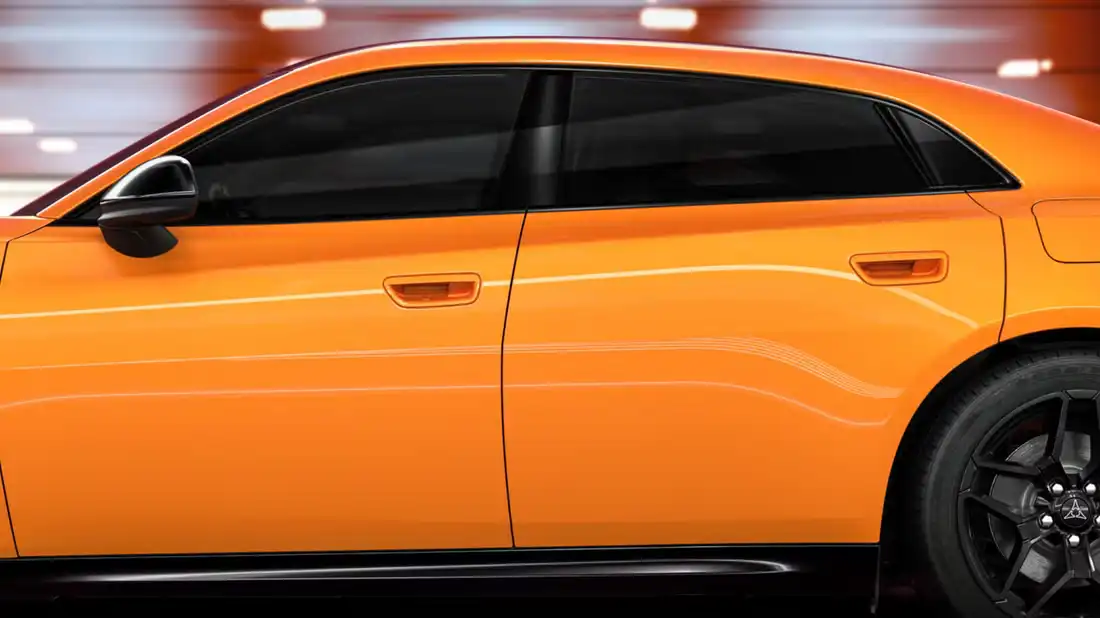
Lately, electric door handles have been popping up on an increasing number of new vehicles, taking various forms. Some models, like the Ford Mustang Mach-E and Tesla Cybertruck, feature simple buttons paired with minimal or even no exterior handles—the Cybertruck notably has no external handles at all. Others resemble traditional handles but reveal their electric nature once you grip them. For example, new Cadillac EVs sport classic grab handles on the outside but use electric buttons inside, while the latest Dodge Charger offers sleek flush handles with integrated buttons.
Electric door handles aren’t entirely new — for example, the Chevy Corvette has featured them since the C6 generation. But recently, their presence has grown more widespread than ever before. This surge made us curious: why have electric handles become so popular? After all, door handles seemed like a design challenge that had already been solved. To get answers, we reached out to the designers behind the Dodge Charger. Scott Krugger, head of North American design, and Ryan Nagode, head of interior design for American brands, shared several reasons why they favor these advanced handles.
They Provide Greater Design Flexibility
Krugger and Nagode emphasized that electric door handles offer designers significantly more creative freedom. Nagode highlighted the interior handle placement on the Charger as a prime example. Instead of a bulky mechanical handle with linkages, the Charger uses small buttons next to long grab handles that are hollowed out to make room for ambient lighting. This design allows the textured door panels to beautifully reflect the light—a look that wouldn’t have been possible with traditional mechanical handles taking up space. On the exterior, the use of electronic buttons means handles can be positioned almost anywhere, freeing designers from conventional constraints.
Naturally, there’s a catch: mechanical linkages still need to be present inside the car for emergency exits. But Nagode pointed out that these don’t limit their design freedom. Instead of positioning all those linkages where the main handle sits—because that handle needs to be ergonomic—they can place the emergency handles lower and further forward in the door, where they’re less visible. On the Charger, these emergency handles are tucked low and near the front of the doors. While this location might seem inconvenient, it’s intentional since they’re not meant for everyday use—that’s what the main grab handle and button are for.
Customers Expect a High-Tech Feel
Krugger and Nagode also noted that customers now expect certain features to feel modern and technological—Electric Door handles fit that expectation perfectly. Krugger specifically mentioned that these handles come across as newer and more advanced compared to traditional mechanical ones. This mindset likely explains the surge in touchscreens and touch-sensitive buttons inside vehicles. With the rise of electronics and smartphones, people have grown accustomed to simply touching surfaces to interact with devices. Outside of keyboards or game controllers, hard buttons are becoming rare, so it makes sense that in-car technology would follow suit. To us, electronic door handles are a natural extension of this trend.
The Double-Edged Sword of Electronic Door Handles
It’s clear how these handles open up new design possibilities—not just inside the Charger, but across various models. Take the Mustang Mach-E, for example, which leverages this technology to create doors with nearly seamless curves, thanks to buttons placed discreetly on the pillars. The result is a remarkably sleek and clean exterior. Similarly, more traditional flush handles like those on the Charger and BMW are probably easier to engineer without the need for bulky mechanical parts to sit perfectly flush with the bodywork.
While we definitely admire innovative design, we also value straightforward functionality and safety. Although not widespread, there have been several reports over the years highlighting dangerous situations caused by unconventional door handles.
Tragically, years ago an elderly man and his dog died in a Corvette after he couldn’t locate the emergency door release. While it’s true that familiarizing yourself with the owner’s manual would help, how often do you actually get into a car thinking, “I need to know how to escape if the door handle fails”?
On a related note, designers strive to keep emergency releases discreet. For instance, the Charger’s emergency handles blend in with the surrounding door panel, making them subtle and not immediately obvious. Tesla’s emergency door releases have gained a reputation for being particularly hard to spot—they’re often hidden inside door pockets and sometimes consist of just a pull cable without a visible handle.
Even from the outside, Electric Door handles can create access issues. A group of Mustang Mach-E owners has filed a lawsuit over the car’s method for entry when the battery is dead. To clarify, if the Mach-E loses power to its door handles, owners must first open the front trunk (frunk) by manually jumping two battery terminals located behind a fender. Only then can power be supplied directly to the 12-volt battery, enabling the electronic handles to function again.
It’s definitely more complicated than simply pulling out a key, turning a lock cylinder, and pulling a mechanical handle. Needing a power source to access the car can be especially inconvenient, often meaning you have to call for help and wait. That delay can be dangerous—especially in a hot car, when every second counts for anyone trapped inside.
We’re not suggesting there’s no place for Electric Door handles—in fact, we appreciate when designers push creative boundaries to deliver beautiful vehicles. At the same time, it’s crucial for both consumers and manufacturers to remember that cars are machines that must prioritize safety and functionality. Striking the right balance between innovation and practicality remains a work in progress for many automakers. Hopefully, the biggest downside will be awkward ergonomics or unusual styling—and nothing more serious.

